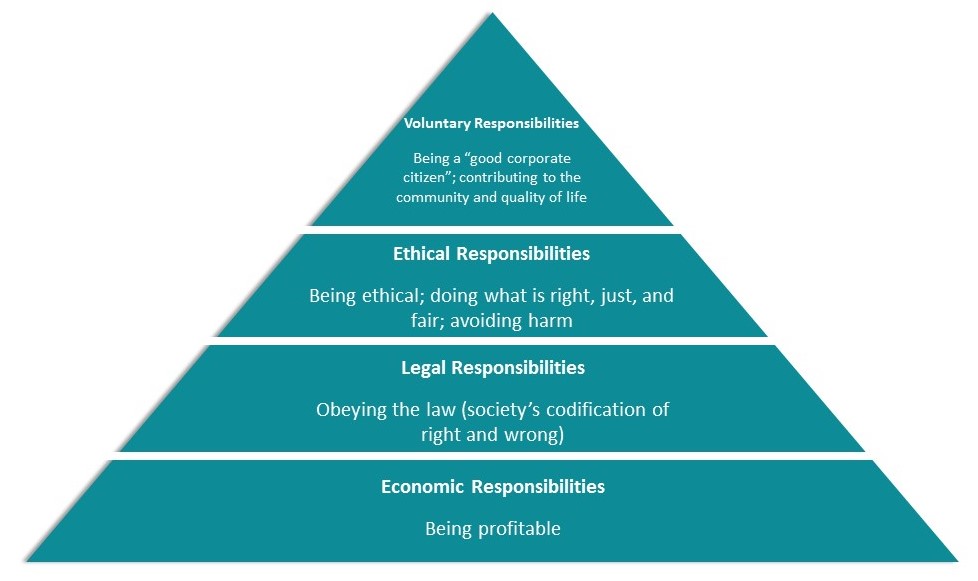There is a lot bandied about these days about corporate social responsibility. This article defines what is it and looks at the use of ISO 26000 as the basis for your CSR programmes.
Corporate Social Responsibility is a management concept whereby companies integrate social and environmental concerns in their business operations and interactions with their stakeholders.

CSR - a rose by another name?
Corporate social responsibility (CSR) is also known by a number of other names. These include corporate responsibility, corporate accountability, corporate ethics, corporate citizenship or stewardship, responsible entrepreneurship, and “triple bottom line”, to name just a few. As CSR issues become increasingly integrated into modern business practices, there is a trend towards referring to it as “responsible competitiveness” or “corporate sustainability”.
Where did CSR come from?
The term ‘Corporate Social Responsibility’ came about in the late 1960’s and early 1970’s, after many multinational corporations used it to describe organisational activities that impacted their responsibility towards the greater environment. CSR originated in philanthropy. Currently, it supports projects external to the normal business activities of a company that are not directed towards making a profit. Typically, such projects have a strong developmental approach and utilise company resources to benefit non-profit organisations and communities.
CSR spend must not be confused with marketing spend, which is utilised to promote the profile of the company brand.
An evolving concept, so be warned
A key point to note is that CSR is an evolving concept that currently does not have a universally accepted definition. Generally, CSR is understood to be the way organisations integrate social, environmental and economic concerns into their values, culture, decision-making, strategy and operations in a transparent and accountable manner and, thereby, establish better practices within the organisation, create wealth and improve society. As issues of sustainable development become more important, the question of how the business sector addresses them is also becoming an element of CSR.
The World Business Council for Sustainable Development has described CSR as the business contribution to sustainable economic development. Building on a base of compliance with legislation and regulations, CSR typically includes “beyond law” commitments and activities pertaining to:
- Corporate governance and ethics;
- Health and safety;
- Environmental stewardship;
- Human rights (including core labour rights);
- Sustainable development;
- Conditions of work (including safety and health, hours of work, wages);
- Industrial relations;
- Community involvement, development and investment;
- Involvement of and respect for diverse cultures and disadvantaged peoples;
- Corporate philanthropy and employee volunteering;
- Customer satisfaction and adherence to principles of fair competition;
- Anti-bribery and anti-corruption measures;
- Accountability, transparency and performance reporting; and
- Supplier relations, for both domestic and international supply chains.
The relationship between CSR and the law
There is a close relationship between CSR and the law. The main instrument governments use to address an organisation’s social, environmental and economic impacts is the law. Many countries have a wide range of laws, whether at the national, state or local levels of government, relating to consumers, workers, health and safety, human rights and environmental protection, bribery and corruption, corporate governance and taxation.
An organisation’s CSR approach should begin by ensuring full compliance with those laws already in place. No matter how good a CSR policy may be, failure to observe the law will undermine other good efforts. Looking ahead, the CSR activities of organisations can be seen as a proactive method of addressing potentially problematic conduct before it attracts legal attention.
Not another ISO standard? Yes, indeed
A recent significant event was the launch of an International Standard providing guidelines for social responsibility (SR) named ISO 26000 or simply ISO SR. It was released on 1 November 2010. Its goal is to contribute to global sustainable development, by encouraging business and other organisations to practice social responsibility to improve their impacts on their workers, their natural environments and their communities.
The 7 principles of CSR
ISO 26000 addresses seven key principles, advocated as the roots of socially responsible behaviour:
- Accountability
- Transparency
- Ethical behaviour
- Respect for stakeholder interests (stakeholders are individuals or groups who are affected by, or have the ability to impact, the organisation's actions)
- Respect for the rule of law
- Respect for international norms of behaviour
- Respect for human rights
The 7 core subjects of ISO 26000
The Seven Core Subjects, which every user of ISO 26000 should consider, are:
- Organisational governance
- Human rights
- Labour practices
- Environment
- Fair operating practices
- Consumer issues
- Community involvement and development
The ISO 26000 scope states: “This International Standard is not a management system standard. It is not intended or appropriate for certification purposes or regulatory or contractual use. Any offer to certify, or claims to be certified, to ISO 26000 would be a misrepresentation of the intent and purpose, and a misuse of this International Standard. As this International Standard does not contain requirements, any such certification would not be a demonstration of conformity with this International Standard”.
This statement concludes that ISO 26000 cannot be used as basis for audits, conformity tests and certificates, or for any other kind of compliance statements. It can, however, be used as a statement of intention by the CEO, and this is seen as its main value.
The practical value of ISO 26000 might be limited if it merely provided a common understanding of social responsibility instead of also facilitating management routines and practices leading to social responsibility. As a guidance document, the ISO 26000 is an offer, voluntary in use, and encourages organisations to discuss their social responsibility issues and possible actions with relevant stakeholders.
So what does your CSR programme look like? The first step is to evaluate your current practices against legal requirements to ensure full compliance.
Make sure you check out the legal section
Share your CSR efforts with us.




